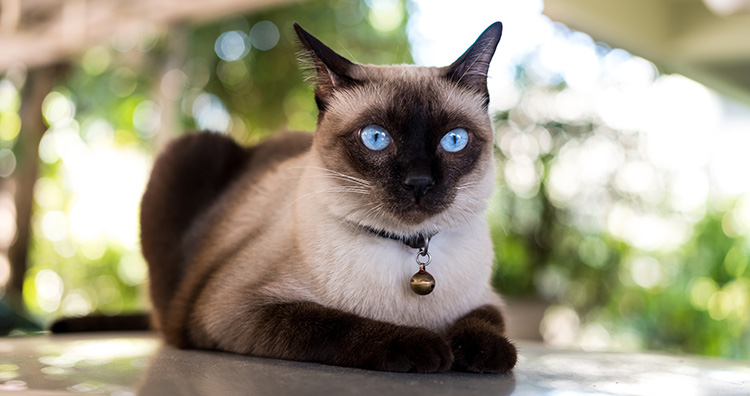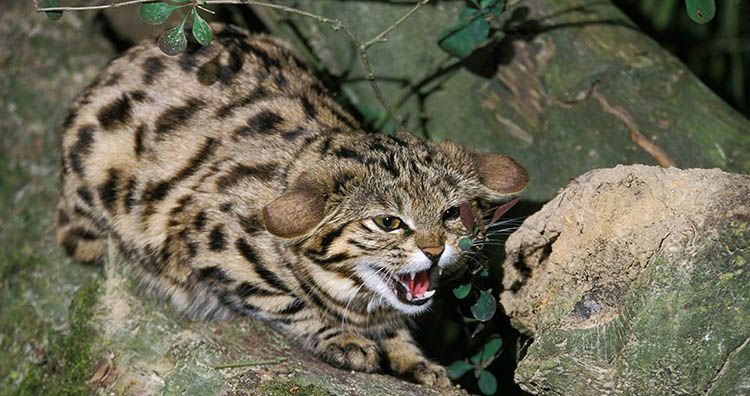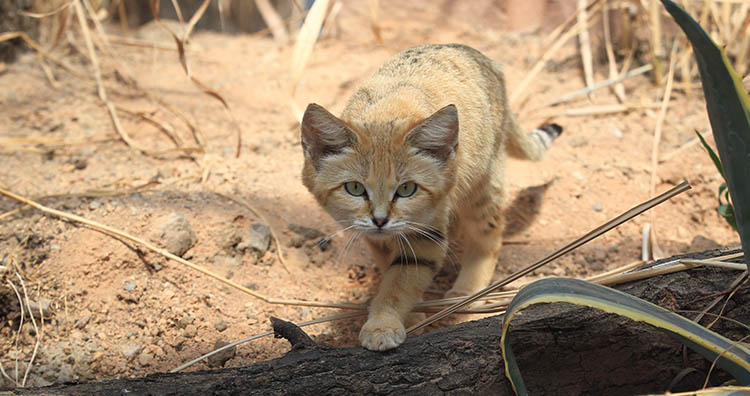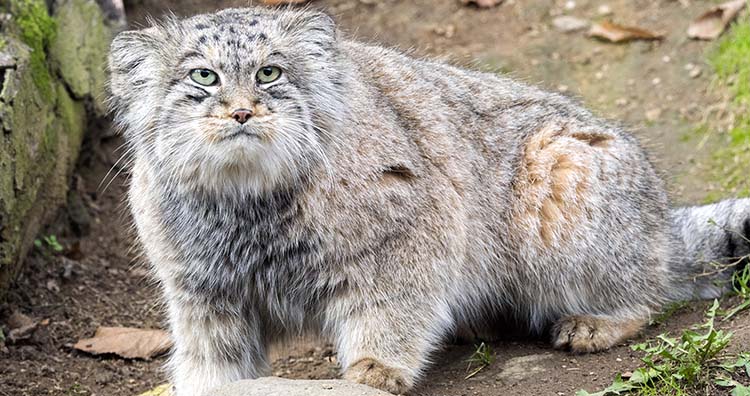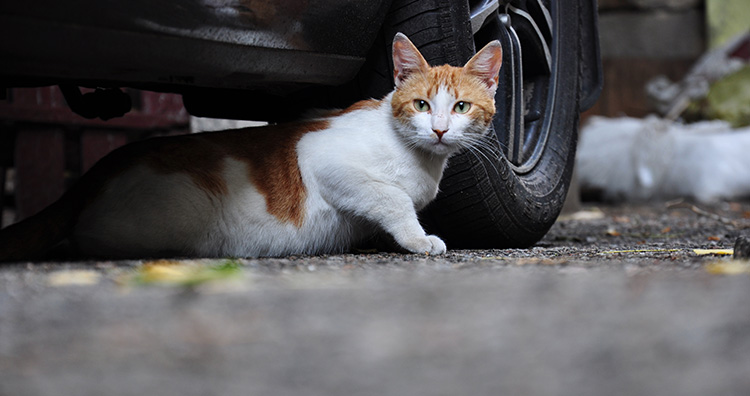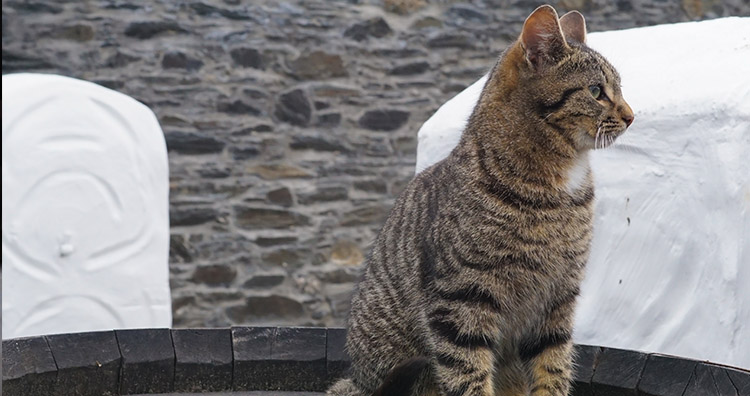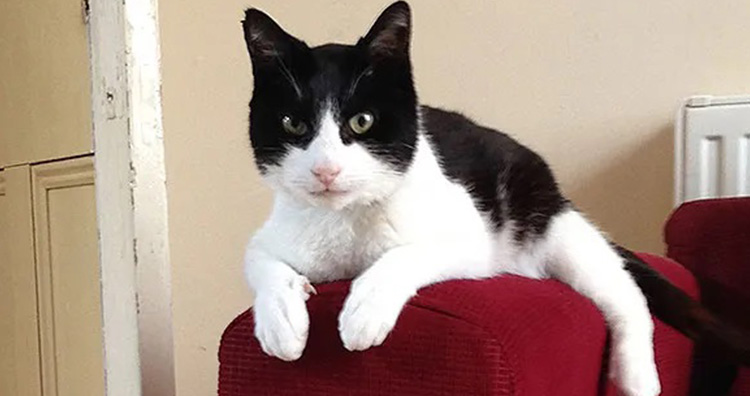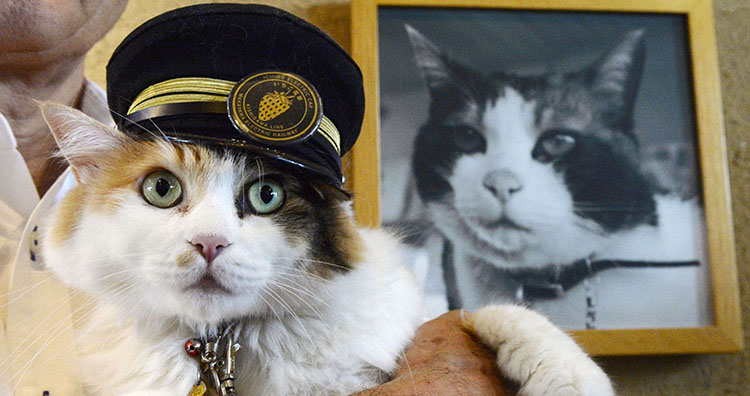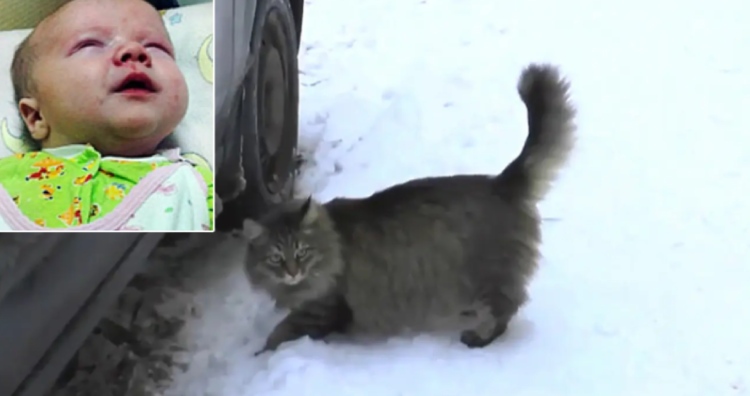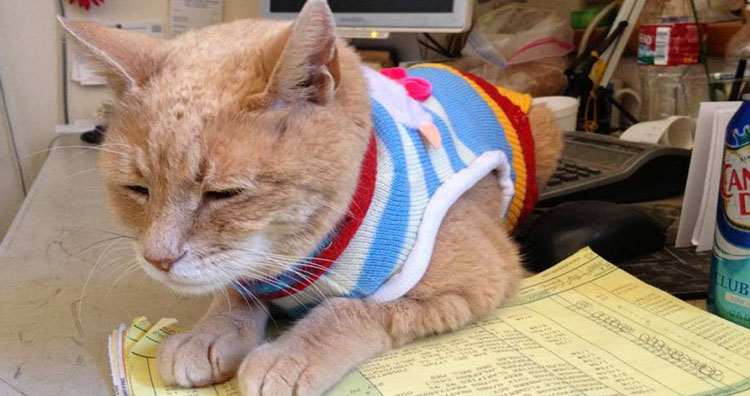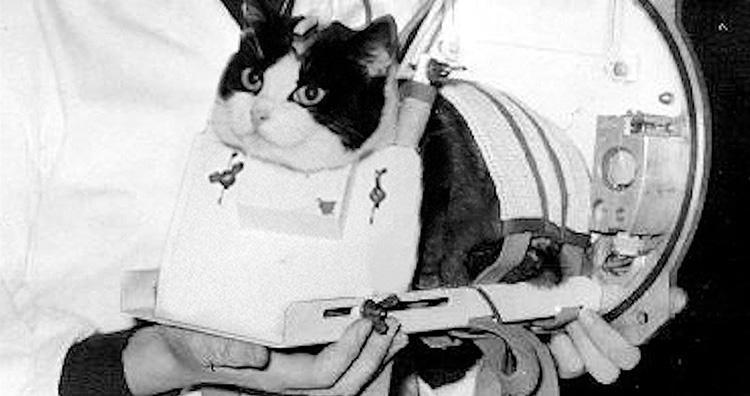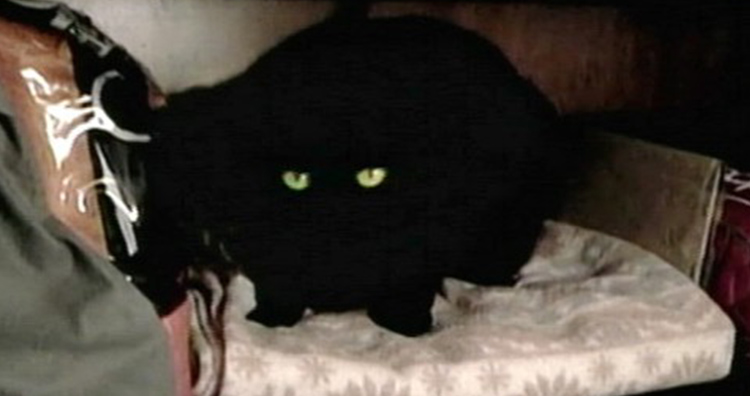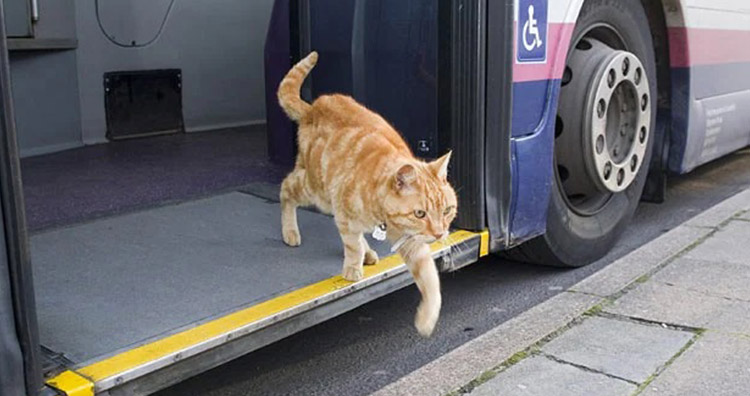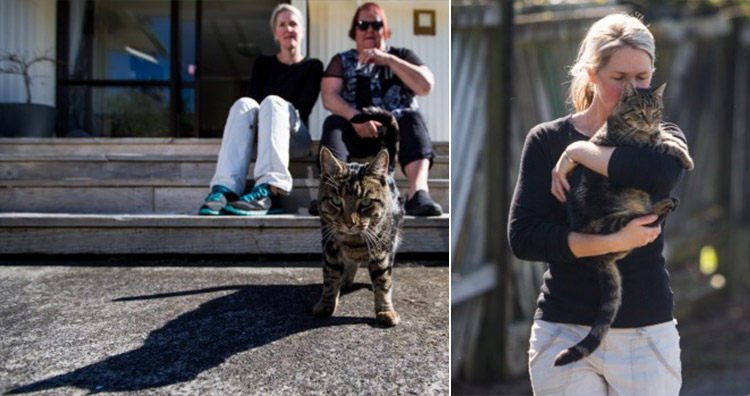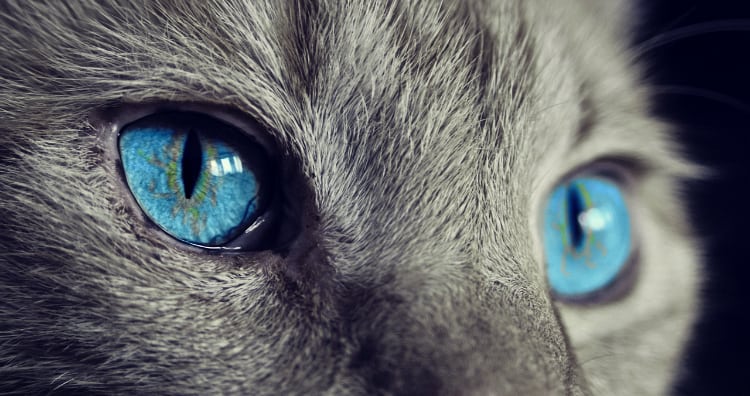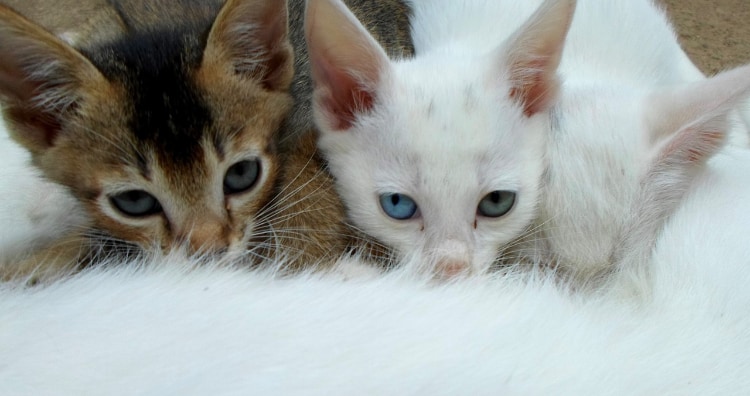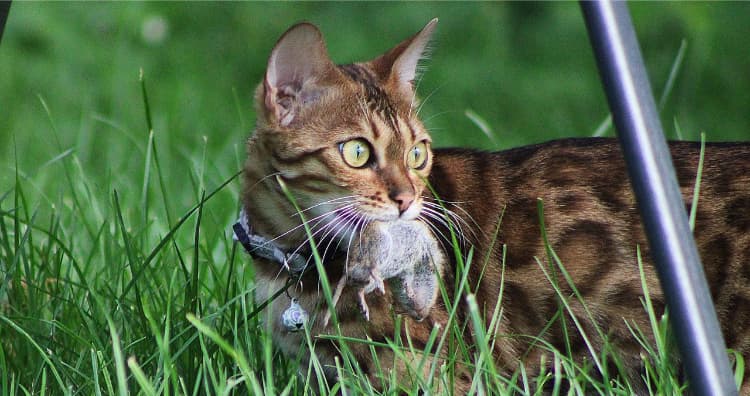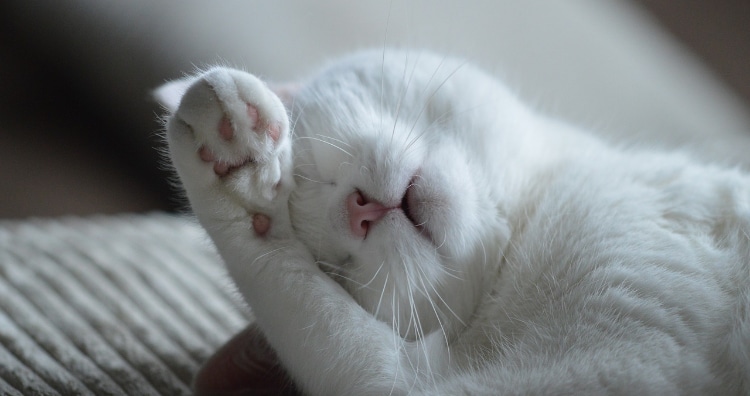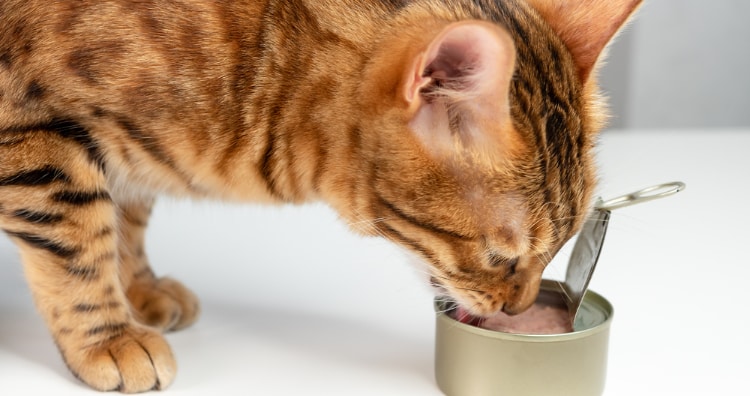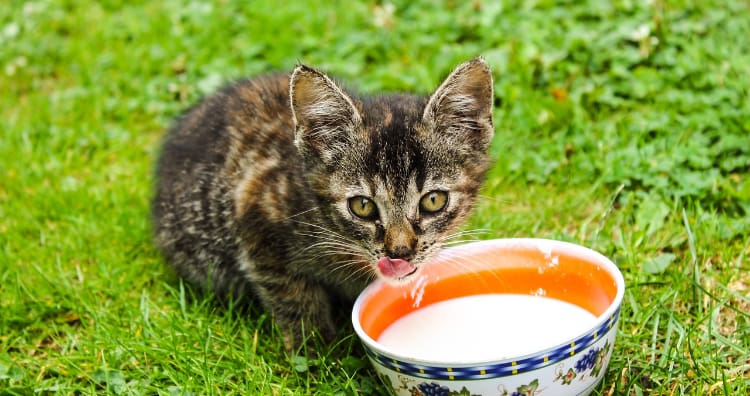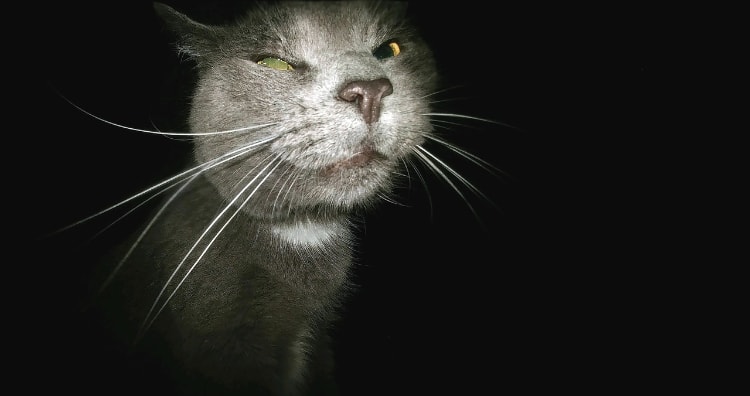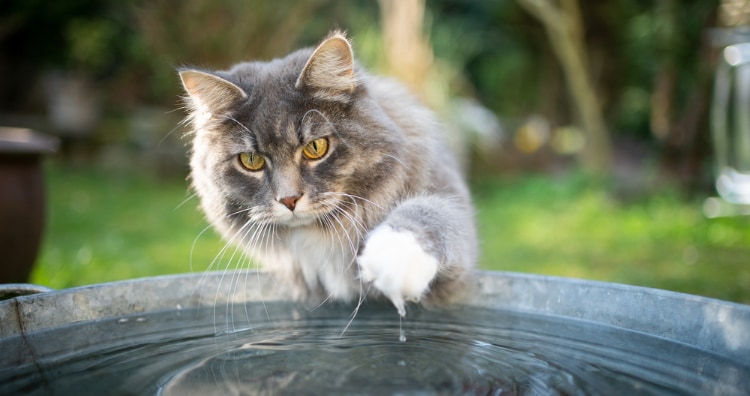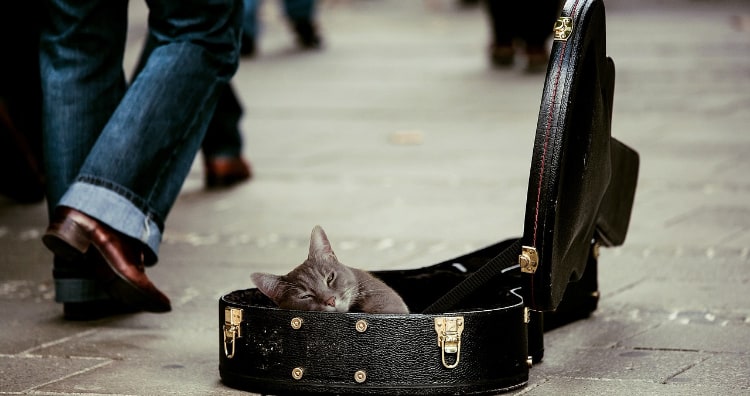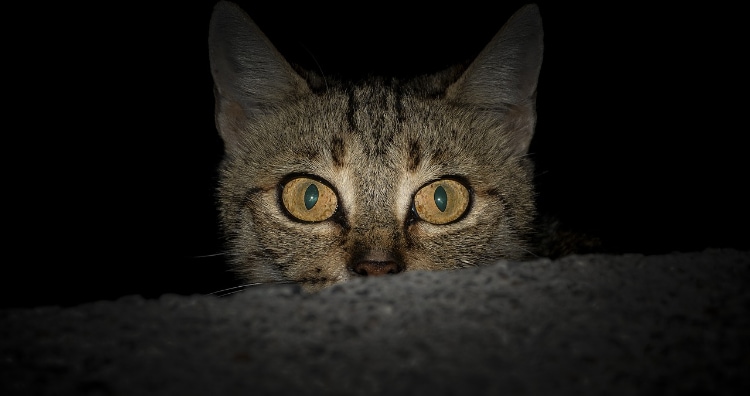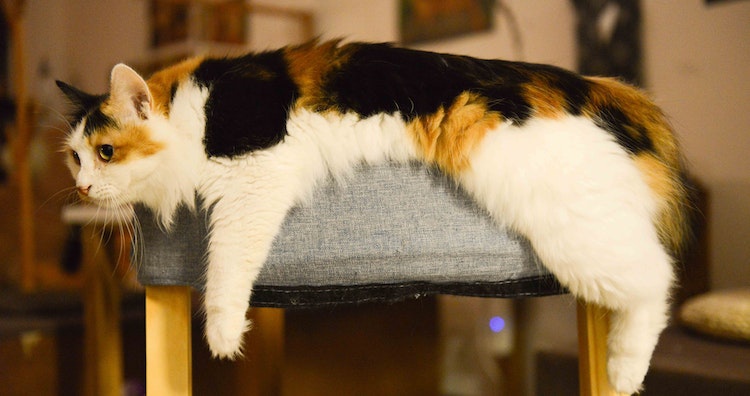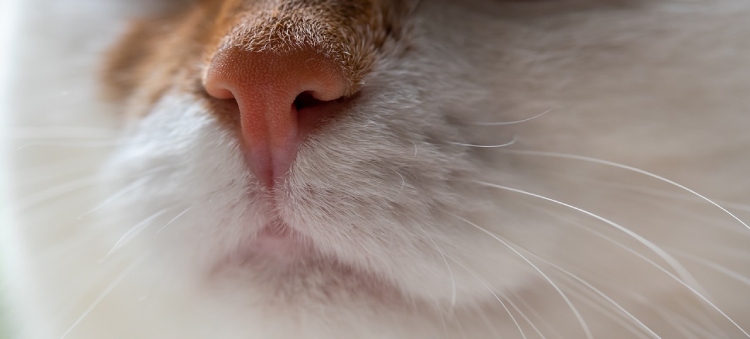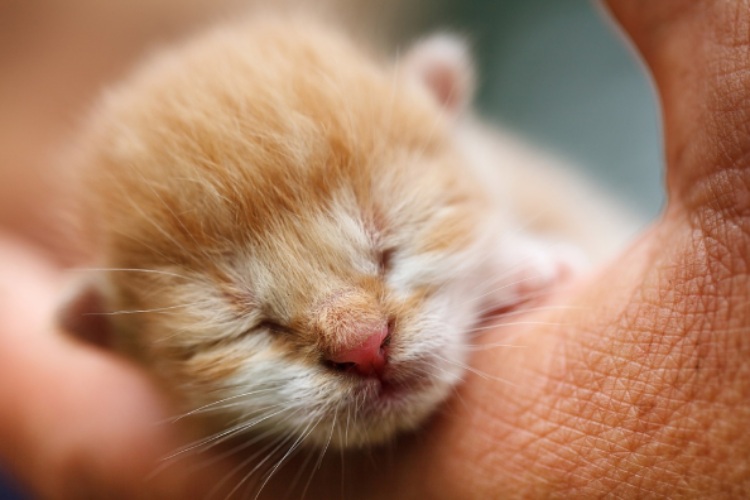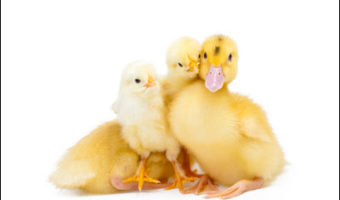80 Fascinating Facts About Cats
Table of Contents
32/80
Siamese cats change color according to different temperatures.
Siamese cats are temperature-sensitive Albinos. The cooler body parts are darker and the warmer body parts are lighter in Siamese cats. This is because the extremities of the body lose heat more easily than the core. As they get older, their body temperature decreases, and the overall color darkens. Their paws, nails, and toes are generally darker. (source)
31/80
Felis nigripes: the African black-footed cat is also known as “the deadliest cat on earth.”
This cat weighs under five lbs. It easily preys on 10 to 14 rodents or birds per night to satisfy its hunger. It has a very accelerated metabolism. This black-footed cat has a kill rate of 75%, while that of a lion is 25%. (source)
30/80
Sand cats specialize in surviving in the desert.
Sand cats have anatomy that makes them super-adjustable to the heat and weather conditions in a desert. They are not good climbers or jumpers but are great diggers. They use their digging ability to make burrows that they snuggle into to escape the heat of the day. (source)
29/80
The Manuls (or Pallas) cats of Central Asia have the longest and densest fur of all the cat species.
Their fur is nearly twice as long on their bellies and tail than on their sides. This fur keeps the cats warm as they are generally found on snow or frozen grounds. (source)
28/80
There are almost 70 million feral cats in the United States alone.
Many cat owners do not get them spayed or neutered, and this is the reason why the cat population has increased alarmingly. (source)
27/80
Distillery cats are employed to get rid of mice in some companies.
Some cats are employed by distilleries to get rid of mice which tend to spoil the produce or products. (source)
26/80
The record for the loudest cat purr is 67.8 dB.
This record was made by a domestic cat, Merlin. It is a black and white cat from Torquay, UK. This volume is nearly the same as a shower. Most cats purr at a sound of 25 dB. (source)
25/80
Japan’s Kishigawa Train Line appointed a cat named Tama to boost travel and tourism.
The tourists and locals were very amused when a train station in Japan hired a cat as their stationmaster. In 2007, a cat named Tama was appointed at the station to amuse tourists. In 2010, Tama was promoted to be an “operating officer.” When Tama died in 2015, her seven-year-old cat assistant, named Nitama, was hired by Wakayama City in 2015 to take over her duties. (1, 2)
24/80
A long-haired red tabby cat once saved a baby’s life.
In 2015, a baby was left abandoned in a box in the snow on the streets of Russia. A long-haired red tabby cat named Masha found the baby and went up to him. The heroic cat climbed inside the box and kept the baby warm while meowing at the same time to attract the attention of people passing by. The baby was eventually rescued unharmed. (source)
23/80
Stubbs, a tabby cat, was the mayor of an Alaskan town for 20 years.
A small Alaskan town, Talkeetna, had a cat named Stubbs as its mayor for 20 years, from 1997 until its death in 2017. This orange tabby cat had numerous uncontested elections and was loved by tourists and locals alike. (source)
22/80
The oldest cat in the world was 38 years old.
Creme Puff, born on 3rd August 1967, died on 6th August 2005. This is the oldest any cat has ever lived so far. (source)
21/80
In 1963, a cat went to space.
A cat named Felicette went to space in the year 1963. It was the first and only cat to go to space. Felicette was launched in October 1963 as a part of a French Space Program. She was launched successfully on a brief suborbital, 15-minute spaceflight. (source)
20/80
The largest cat inheritance belongs to a black cat by the name of Tommaso.
Tommaso inherited $13 million and properties in Rome, Milan, and land in Calabria after their very wealthy owner had died. Maria Assunta, a very wealthy builder’s widow, had no children of her own, but only had her beloved cat, Tommaso. (source)
19/80
Dodger, a ginger cat, rides the public buses near his home in England.
The owner of Dodger discovered that he rides in public buses at least once a day taking a 10-mile round trip. The drivers give him food, he sits on passengers’ laps, and drivers know which stop to let him off at. (source)
18/80
A cat from New Zealand tricked two different women into owning him.
Owner Shirley Bishop came to know about her cat, Simba’s, second home only after she once returned home after a week with stitches on her neck and a shaved shoulder. Neither of the owners knew that they had the same cat as a pet. They later signed a shared custody agreement. (source)
17/80
Cats are more popular pets than dogs in America.
There are 88 million cats compared to 75 million dogs. The 2007 National Pet Owner’s survey found out that the pet ownership has increased and is at an all-time high in the United States. A whopping 71.1 million households, that’s 63% of all American households own at least one pet. Even though more houses prefer canine to the feline, the sheer number of cats outstrip the dogs due to many multi-cat homes. (source)
16/80
Evidence suggests domesticated cats have been around since 3600 B.C., 2,000 years before Egypt’s Pharaohs.
The skeleton of six cats, including four kittens suggests that the cats were domesticated much earlier than suspected. Archaeologists once believed that the wild cats were domesticated during the time of Pharaohs around, 4,800 years ago. But the bones found at Hierakonpolis, an ancient Egyptian Cemetery for the wealthy dating back to 3600 B.C and 3,800 B.C. suggests otherwise. (source)
15/80
The reason why cats have a vertical slit pupil is because they are ambush predators.
The vertical slit pupil helps them to judge the depth so that they can leap at their prey. Research published in the Journal of Science Advances suggests that nocturnal predators had a vertical slit pupil to gauge the distance for a prey snatching leap. The prey was endowed with a horizontal pupil that allowed them to scan the terrain for the predators and to keep a watch all around while sprinting from danger. (source)
14/80
A single pair of cats and their kittens can produce as many as 420,000 kittens in just 7 years.
A single cat produces 2-8 kittens in a litter. The prolific cat produces 2-3 litters per years, which mean that a single cat can produce 24 kittens per year! A cat can give birth to 100 kittens during her productive years. Female cats are prolific breeders. One female cat has the ability to produce 12 kittens per year (if not spayed). Climate plays an important role in the ovulation cycle of female cats. In a warmer climate, a kitty may go into heat all the year around. Each heat or Estrus cycle lasts about a week and repeats regularly every 2-3 weeks. An unchecked, free mating may result in your kitty giving birth to kittens thrice a year. Each pregnancy produces several kittens and each litter size ranges from 2-8 kittens. This means that a single kitty can produce 24 kittens in a year. (source)
13/80
Cats bring dead mice and birds to their owners as a gesture.
Ethologist Paul Leyhausen suggested that cats adopted the humans into their group and shared their kill in accordance with the dominance theory wherein humans were placed high or near the top. Desmond Morris, anthropologist, and Zoologist who wrote the book Catwatching hypothesized that cats are trying to teach the humans to hunt or to help like they do with other elderly or inept kitten. Morris hypothesis does not factor in the fact that male cats also bring in dead mice or birds, even though they have no role in the nurturing of the kittens. (source)
12/80
A cat slowly closes and opens its eyes or winks signifies trust.
Cats communicate mainly through their eyes. A slow blinking is a positive sign where the cat says that it trusts you and considers you as their friend. A direct stare will unsettle the cat as it considers ‘direct stare’as a threat. (source)
11/80
Cats can become addicted to tuna and refuse to eat anything.
They are known as ‘Tuna Junkies’. However, eating too much of Tuna can cause the dangerous “Steatitis” or “Yellow Fat” disease (Pansteatitis). Tuna has a very strong flavor and smell, this can literally drive a cat crazy so much so, they begin to consume just the tuna and avoid other food placed before it. This addiction can turn serious as a consistent diet of tuna can lead to mercury poisoning in cats. The other problem with the ‘tuna-only’diet is that this diet can cause malnutrition. Tuna doesn’t have the required amount of Vitamin E, a deficiency of vitamin E will lead to a condition called “Steatitis” or “Yellow Fat” disease (Pansteatitis). (source)
10/80
Adults cat cannot digest milk, because they do not have lactose.
Cats are natural carnivores. Milk has not been part of a wild cat’s diet. Lactase which would be produced by the young kitten will stop its production once the kitten is weaned from milk. Adult cats become lactose intolerant and feeding the cat with milk can cause upset tummy, cramps and even diarrhea. (source)
9/80
Cats go crazy for catnip because it contains a chemical comparable to the odour of a dominant female cat’s urine (in heat).
Catnip is a herb belonging to the mint family. Catnip contains the chemical trans-nepetalactone that affects the cats in a crazy way. trans-nepetalactone smells like the chemical found in the urine of a dominant female cat. This smell tricks the cat into believing that there is a female around and they set out to impress the female cats by rolling around, stretching the claws and doing anything crazy to get the attention of the female cat. (source 1,2)
8/80
Scientists say cats are terrified of water because their ancestors lived near few huge bodies of water and never learned to swim.
The complicated relationship of cats with water is due to a variety of reasons. According to Dr. John Bradshaw, a professor at the University of Bristol’s School of Veterinary Sciences, the domesticated cats descended from the wild cats of Arabia. There were very few water bodies in the desert and the cat never learned to swim as there was no advantage to it.
Another reason, according to a team of researchers from schools including, Washington University School of Medicine and Texas A&M is that despite living in a domesticated society, cat still retains the instincts of their wild ancestors, this means they are constantly on the alert against dangers and must remain in prime condition to fight or flee from the enemy. Water makes the fur heavy and weighs down the cat, this slows down the cat’s reflexes and makes him helpless and leaves him at the mercy of the predator. (source)
7/80
Cats enjoy Species Appropriate Music than human music.
They enjoy music that uses the frequencies and tempos similar to the ones cats use to communicate. Cats enjoy music, but not every music. In a study, a team of psychologists at the University of Wisconsin created custom made music by mixing up beats that fall into the same frequency range as that cats use to communicate with one another. The music also has a tempo that is similar to the beat of a purring of a cat. When the custom music was played to 47 cats, some of the cats would come over and rub themselves against the speaker than stand apart indifferently as they tended to do when human music was played. (source)
6/80
Cats are not nocturnal. They are actually crepuscular: active at dusk and dawn.
Crepuscular animals prefer to laze around during the day to avoid the heat and stay cool thus conserving their energy for the cooler period of the day. They become active during the twilight zone. Some of the cats tend to get active on an overcast day or during moonlit nights. (source)
5/80
Cleaning a cat’s litter box can get you Toxoplasmosis if the cat is infected.
T. gondii, a parasite causes Toxoplasmosis. Cats pick up the parasite when they eat the infected rodents or coming in contact with the feces of an infected cat. The parasite is passed along to humans when they clean the litter box of an infected cat and accidently absorb it when they touch their face/eat a food without properly washing their hands. The infection rarely causes any serious health problems in a healthy adult but can be dangerous for people with weak immune system. While pregnant, it can cause your baby to be born with cerebral palsy, seizures, and mental retardation. (source)
4/80
A cat has “predicted” the deaths of 25 residents in a nursing home in the US.
Oscar, the cat that lives in Steere House Nursing and Rehabilitation Centre in Rhode Island has a tendency to go and curl up against the dying patients. The cat displayed sudden affection for dying residents. The animal experts say his uncanny ability is not psychic but is biochemical, a dying person’s body gives out a particular chemical as their body is shutting down. Apparently, Oscar senses and smells the organ shutting down and goes to the dying person’s bed. (source)
3/80
Cats Just Don’t Care
Cats are perfectly capable of understanding commands, studies show. They just don’t care to follow them. (source)
2/80
Unique Nose Prints of Cats
Did you know that every cat’s nose has a pattern of ridges and troughs that’s unique to that particular cat? In fact, just as with human fingerprints, cat nose print patterns can be used to identify them. (source)
1/80
Increased Lifespan of Pet Cats
The average life expectancy of pet cats has increased to 15 years from seven years back in the 1980s. (source)
12 Amazing Animals You Did Not Know Share the Planet With Us















